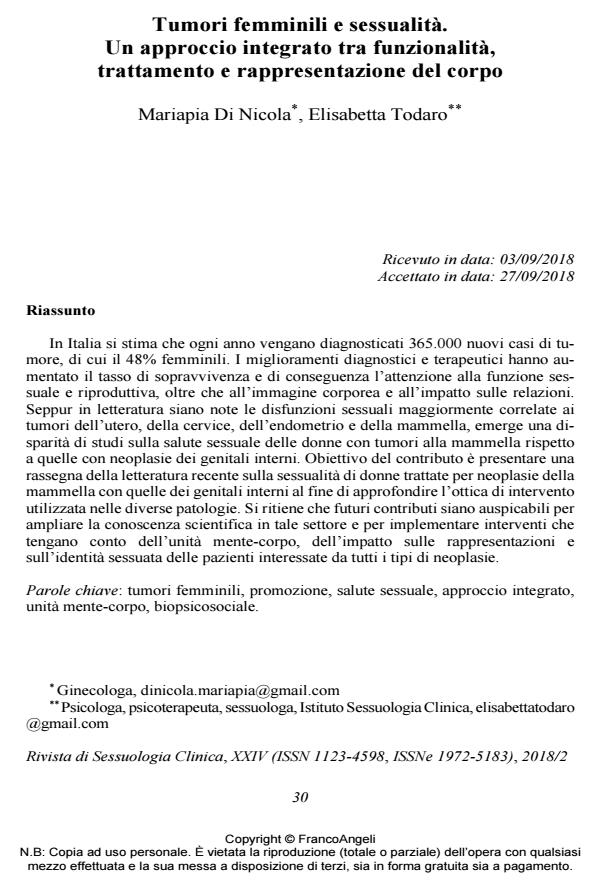Tumori femminili e sessualità. Un approccio integrato tra funzionalità, trattamento e rappresentazione del corpo
Titolo Rivista RIVISTA DI SESSUOLOGIA CLINICA
Autori/Curatori Mariapia Di Nicola, Elisabetta Todaro
Anno di pubblicazione 2018 Fascicolo 2018/2
Lingua Italiano Numero pagine 19 P. 30-48 Dimensione file 202 KB
DOI 10.3280/RSC2018-002002
Il DOI è il codice a barre della proprietà intellettuale: per saperne di più
clicca qui
Qui sotto puoi vedere in anteprima la prima pagina di questo articolo.
Se questo articolo ti interessa, lo puoi acquistare (e scaricare in formato pdf) seguendo le facili indicazioni per acquistare il download credit. Acquista Download Credits per scaricare questo Articolo in formato PDF

FrancoAngeli è membro della Publishers International Linking Association, Inc (PILA)associazione indipendente e non profit per facilitare (attraverso i servizi tecnologici implementati da CrossRef.org) l’accesso degli studiosi ai contenuti digitali nelle pubblicazioni professionali e scientifiche
In Italia si stima che ogni anno vengano diagnosticati 365.000 nuovi casi di tu-more, di cui il 48% femminili. I miglioramenti diagnostici e terapeutici hanno au-mentato il tasso di sopravvivenza e di conseguenza l’attenzione alla funzione ses-suale e riproduttiva, oltre che all’immagine corporea e all’impatto sulle relazioni. Seppur in letteratura siano note le disfunzioni sessuali maggiormente correlate ai tumori dell’utero, della cervice, dell’endometrio e della mammella, emerge una disparità di studi sulla salute sessuale delle donne con tumori alla mammella rispetto a quelle con neoplasie dei genitali interni. Obiettivo del contributo è presentare una rassegna della letteratura recente sulla sessualità di donne trattate per neoplasie della mammella con quelle dei genitali interni al fine di approfondire l’ottica di intervento utilizzata nelle diverse patologie. Si ritiene che futuri contributi siano auspicabili per ampliare la conoscenza scientifica in tale settore e per implementare interventi che tengano conto dell’unità mente-corpo, dell’impatto sulle rappresentazioni e sull’identità sessuata delle pazienti interessate da tutti i tipi di neoplasie.
Parole chiave:Tumori femminili, promozione, salute sessuale, approccio integrato, unità mente-corpo, biopsicosociale.
Mariapia Di Nicola, Elisabetta Todaro, Tumori femminili e sessualità. Un approccio integrato tra funzionalità, trattamento e rappresentazione del corpo in "RIVISTA DI SESSUOLOGIA CLINICA" 2/2018, pp 30-48, DOI: 10.3280/RSC2018-002002